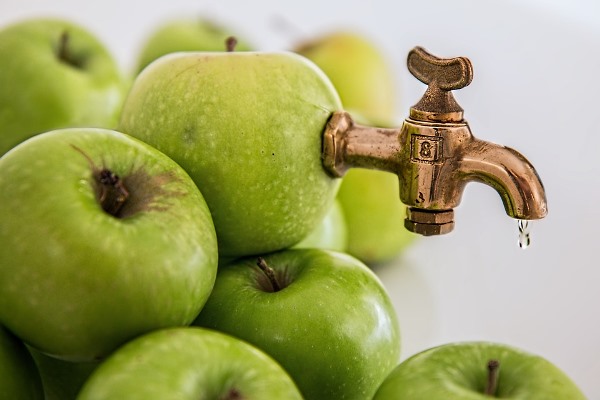This is the result of an investigation of commercial juices by the German consumer magazine "Ökotest". The active substance was detected in three of the 17 conventionally produced juices.
Mepiquat and chlormequat are pesticides approved in the EU for use in grain cultivation. They slow down the growth of the stalks so that they do not bend so easily due to wind and rain. Now one might ask why these active substances are found in apple juice. There are two possible explanations. First, it is an accidental transfer to apples from trees that stood near treated crop fields or second, the agents were applied illegally in fruit growing because they can also stimulate flower formation. The maximum permissible value in pome fruit is currently 0.02 mg/kg. In the three juice samples examined, it was exceeded. In this case there was no processing factor to consider, and the food control authority assumed that fruit and 100% juice are to be considered equivalent.
From time to time, we are asked by customers to please not test their fruit and vegetable products with the comprehensive pesticide multi-methods, but only to test specifically for possible residues of the active substances permitted in the respective crop.
Why we do not recommend this is explained in the above-cited test report. In targeted residue analysis, one can only find what one is looking for, i.e., what was previously mixed into the reference standard. Therefore, a responsible quality manager should also bear in mind that there may surprisingly be contamination with unapproved active substances.
Opting for the broadest possible spectrum of testing significantly may reduce the risk to oversee potential unusual pesticide residues. The manufacturers of the devalued apple juices would have been spared the resulting damage to their image for little money. We always recommend testing the raw materials before processing.
It is a persistent misconception that limited examination packages are more cost-effective. Costs and thus price are not determined by the number of active substances examined, but by the required combination of chromatographic separation runs.
YOUR PLUS: With over 650 active substances in the routine pesticide analysis of fruit and vegetables, we would have reliably detected the contamination in the apples before processing, but also still in the apple juice. Ask our professionals for residue analysis.
Author: Dr. Frank Mörsberger

 Contact
Contact

 Contact
Contact Career
Career